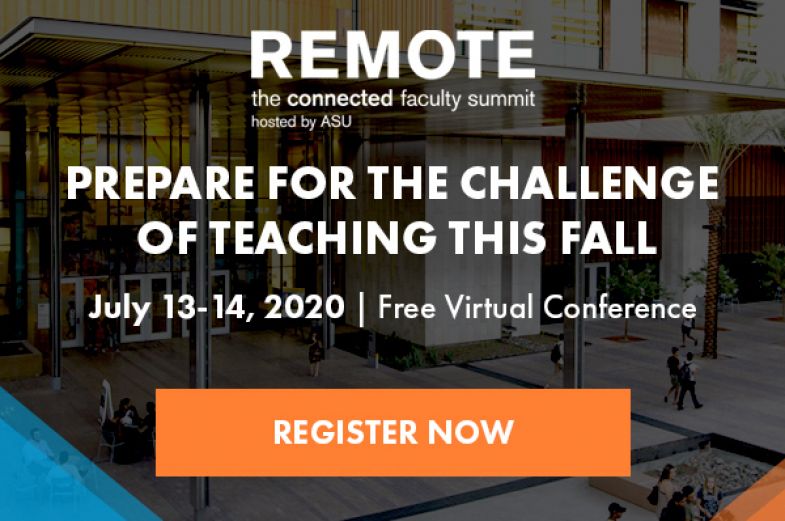If the words “plexiglass” and “physical distancing” dominate every aspect of your institution’s plan for returning to campus in fall 2020, then your pedagogical antennae should be twitching. Whether we will be teaching our students, masks on, in campus classrooms or online, we must not forget that we are teaching in an unprecedented historical moment.
Our students are learning amid a global pandemic, financial catastrophe, police violence, social isolation, a passionate struggle for social justice, rampant racism, income inequality, imperilled democracy, defunding of higher education, the adjunctification of the professoriate, soaring tuition debt, and a gig economy that threatens to rob them of productive careers.
In this climate, with lives at stake, how can anyone do the deep and meaningful work of learning without first establishing trust? Come autumn, if we are delivering the same lectures we gave before this crisis to students now sitting in a dystopian version of a classroom behind a plexiglass screen and staying six feet apart, then we ourselves are no more interactive than a computer screen. Onsite versus online isn’t the real issue here; our most significant challenge is finding engaged ways to help prepare students for the complex and fraught future we have bequeathed to them.
What can we do to offer the most dynamic, interactive pedagogy possible? What is special about being, thinking, and learning together in the same space? How much of that experience can be achieved in digital space? The emergency instruction into which we were all propelled this spring should have given us reason to think deeply about what is profound about our face-to-face classrooms. What, if anything, did we actually lose going online? What did we gain?
The best methods for offering truly engaged teaching and transformative learning are the same onsite and online even if the apparatus – classroom or computer – is different. In either environment we need to provide education based on attention, equality and care. We must ensure that, in any classroom setting, we have structured, student-centred, peer-to-peer interaction, not just students answering when professors call on them nor random “group work.”
The point of truly collective, collaborative work is that it is closest to the forms of work most of us engage in as adults outside school – in the workplace, in community organising, and in functioning democratic organisations.
How do you do this? Often it means stepping out of the way and trusting students to be able to learn together, challenge one another, create collectively, and not only critique a system, but advocate and then design new and better systems with equity at the core.
We can call this active or participatory learning, progressive education, or critical or radical pedagogy. We can read about it in the works of Paolo Freire, bell hooks, Frantz Fanon and Audre Lorde. Student-centred learning is founded on the idea that we humans like to learn and, when given the chance to participate in the learning process, we learn better. It means trusting students to be curious about a given topic which, in turn, means we need to be curious too about their contributions.
One way that we do this is by leaving a part of a syllabus blank and inviting students to work in small groups, propose topics and readings, pitch those to the group, and then we ask the group as a whole to vote a topic up or down. The process is an exercise in learning, deliberation, feedback, persuasion, compromise, evaluation and inclusion.
Other times, we leave blank such seemingly pro forma aspects of a syllabus as the “learning outcomes” or, when these are not flexible (as when a department must approve them in advance), we leave room for students to add their own learning goals that we collectively agree to as a class. Students have never failed us in coming up with poignant, searching, meaningful learning outcomes.
One can even challenge students to research extensively and propose serious, workable solutions to an institution’s most nagging problems. Having trouble convincing your institution’s general education curriculum committee to be as inclusive as its pronouncement about anti-racism? Invite your students to take a stab as a class project. Concerned about policing on campus? Accessibility? Sexual assault? Budget cuts? How to find more interactive ways of communicating online? Safeguarding against plagiarism or cheating on exams? Offer all those as research project topics in relevant courses – or across courses.
We are betting your students will have useful, non-trivial solutions to most of those. In addition to learning course content, they will also be mastering the “essential” (sometimes called “soft”) skills that correlate highly with career advancement. They also correlate with leadership skills necessary to build healthy communities and engaged, stable and committed democracies.
The research on the superiority of participatory learning is irrefutable. In May 2014, several scholars from a variety of STEM disciplines published a “meta analysis” of 225 separate studies of different ways of teaching and learning. In the Proceedings of the National Academy of Sciences (PNAS), they argued that active learning improved student performance in science, engineering, and mathematics, from test scores to retention and applicability (the ability to apply classroom learning to new situations).
They write, “students in classes with traditional lecturing were 1.5 times more likely to fail than students in classes with active learning.” A follow-up meta study conducted in 2020, showed results were even more positive if difference, equity, equality, diversity and inclusion were factored into the study.
First generation students and students of colour did particularly well in situations where they were trusted and respected. One popular account of the PNAS study quipped that, if comparative results had been this clear-cut in a pharmaceutical study, traditional pedagogy would be taken off the market.
The issue of trusting students as co-learners is far deeper than what platform we use. It extends far beyond questions of onsite versus online learning, the seminar versus the lecture hall, or the asynchronous or synchronous video course. Any of these can be one-way and static. Any of these can be engaged, relevant, and student-led. In the end, the issue is not onsite versus online. It is status quo versus engaged, relevant, student-centred learning. The most important “tools” we have to enact a transformation are neither plexiglass nor Zoom; they are our open hearts and minds.
Cathy N. Davidson is distinguished professor of English and founding director of the Futures Initiative at the Graduate Center, CUNY. Christina Katopodis is a Futures Initiative fellow, and PhD candidate in English at the CUNY Graduate Center. Together they are co-authoring Transforming Every Classroom: A Practical Guide to Revolutionary Teaching and Learning (Harvard UP, anticipated 2022).
Cathy and Christina will be giving a presentation on trusting your students at the REMOTE summit on 13 July. Learn more and register.
Register to continue
Why register?
- Registration is free and only takes a moment
- Once registered, you can read 3 articles a month
- Sign up for our newsletter
Subscribe
Or subscribe for unlimited access to:
- Unlimited access to news, views, insights & reviews
- Digital editions
- Digital access to THE’s university and college rankings analysis
Already registered or a current subscriber? Login





